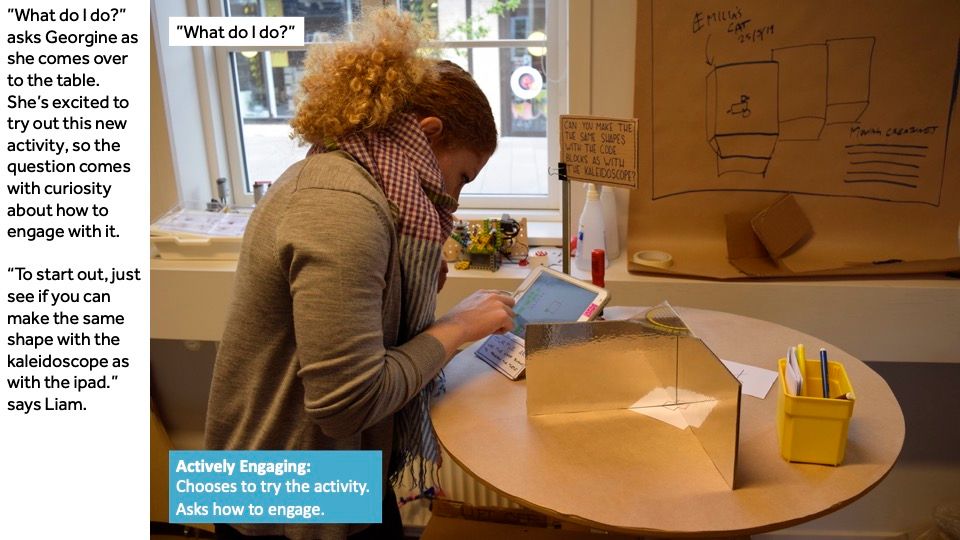Open World Kaleidoscope #
Open World Kaleidoscope is a simple tool that opens possibilities for creative exploration through tessellation. It is made of two small mirrors connected by a hinge. When placed on a surface, the mirrors create a kaleidoscopic effect that can be adjusted as the angle of the mirrors is made bigger or smaller.
I designed this handheld (businesscard sized) Open World Kaleidoscope to enable active audience participation in talks on creativity. Each audience member receives a Open World Kaleidoscope and a set of instructions to use the mirror. The instructions follow the Jay Silver closed started, open ended design principle for building creative confidence. 1 The first prompt is to multiply ones fingers using the mirror; the second prompt is to create a square using the back of ones cellphone; and the third prompt is to use two minutes inventing new ways to use the mirror to create new shapes and patterns.
This audience participation tool was inspired by The Duck activity used by LEGO Education.
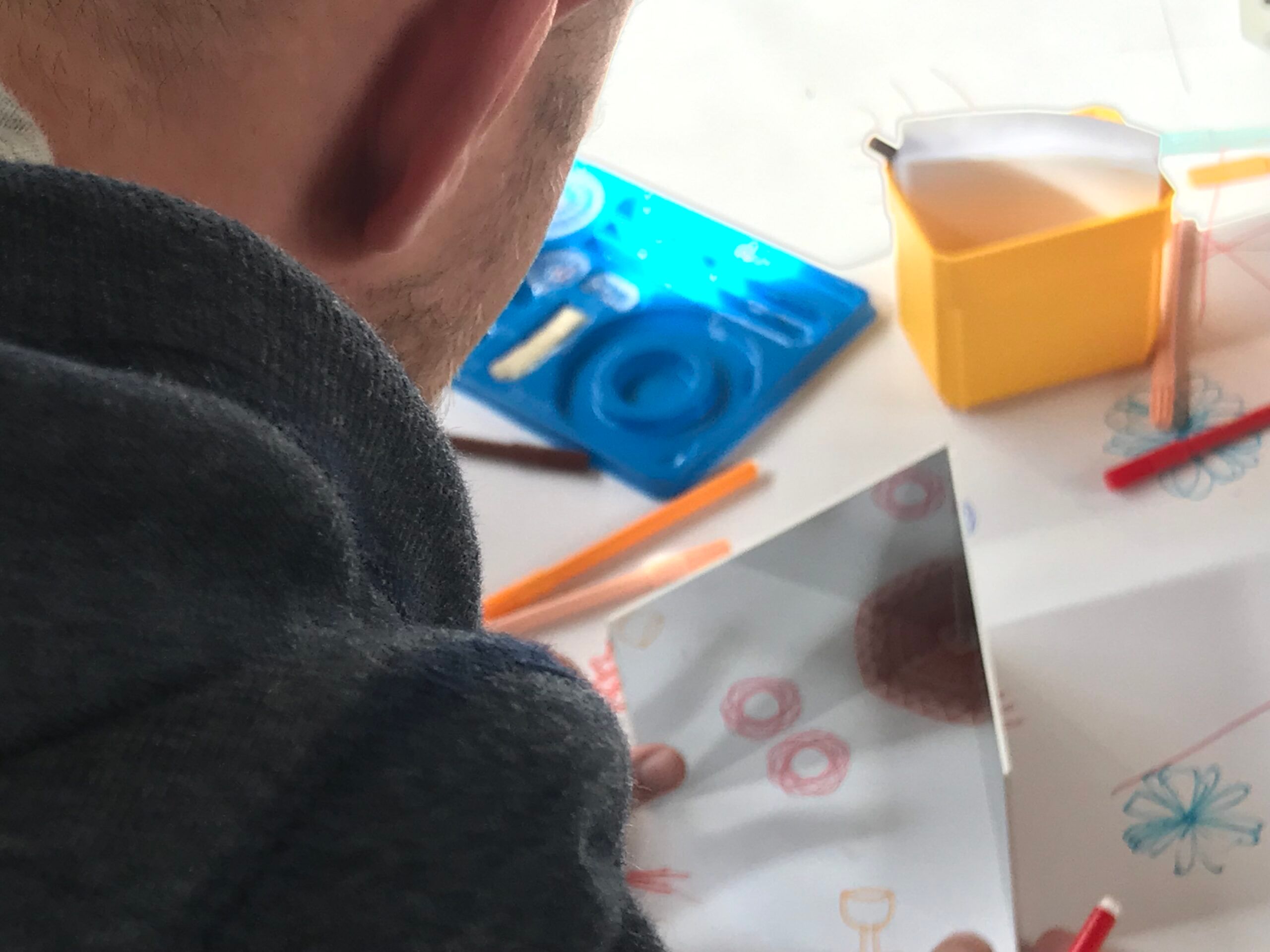
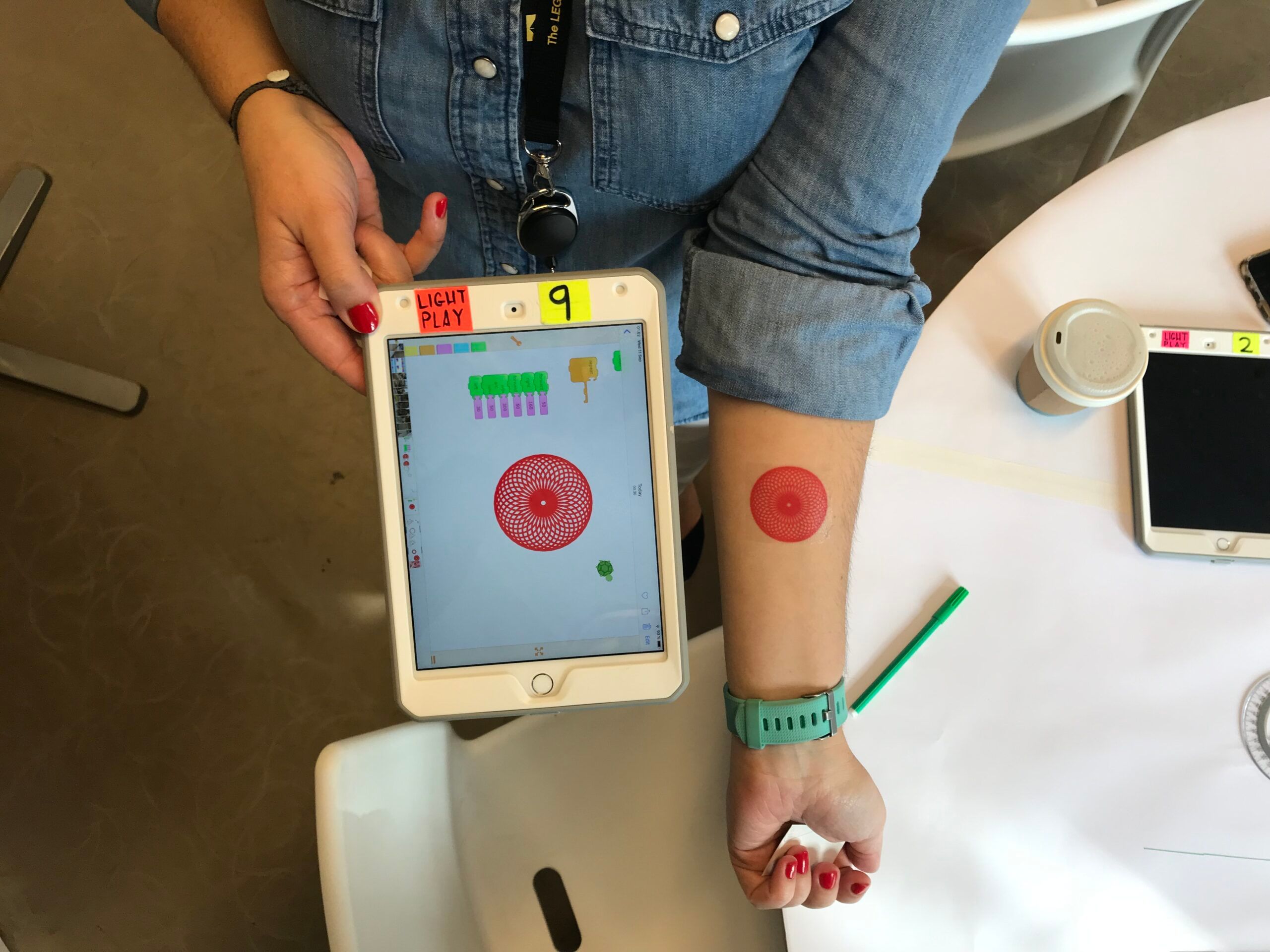
Use in Workshops #
I've also used Open World Kaleidoscope in a few workshops, pairing the tool with Turtle Art and Spirographs to deepen the possibilities for pattern exploration, and a temporary tattoo printer2 to make the explorations more meaningful.
History #
My fascination with tinkerable kaleidoscopes began at the ECSITE conference makerspace in Copenhagen, 2019. Samar Kirresh from the Qattan Foundation had brought a small open-ended Open World Kaleidoscope mounted on a rotating plate. This small installation invited people to draw a squiggle, place it on the plate, and rotate the plate to see the different shapes change in the mirror.
While preparing for a workshop, Samar and I started playing with the Turtle Art ipads - and mixing them with the kaleidoscope. This lead to a type of mimicry play, where a shape was made in one medium, then recreated in the other.
In the weeks that followed I continued to experiment with the Open World Kaleidoscope, as an installation at the LEGO Idea Studio, as a workshop, eventually as a communication tool for presentations.
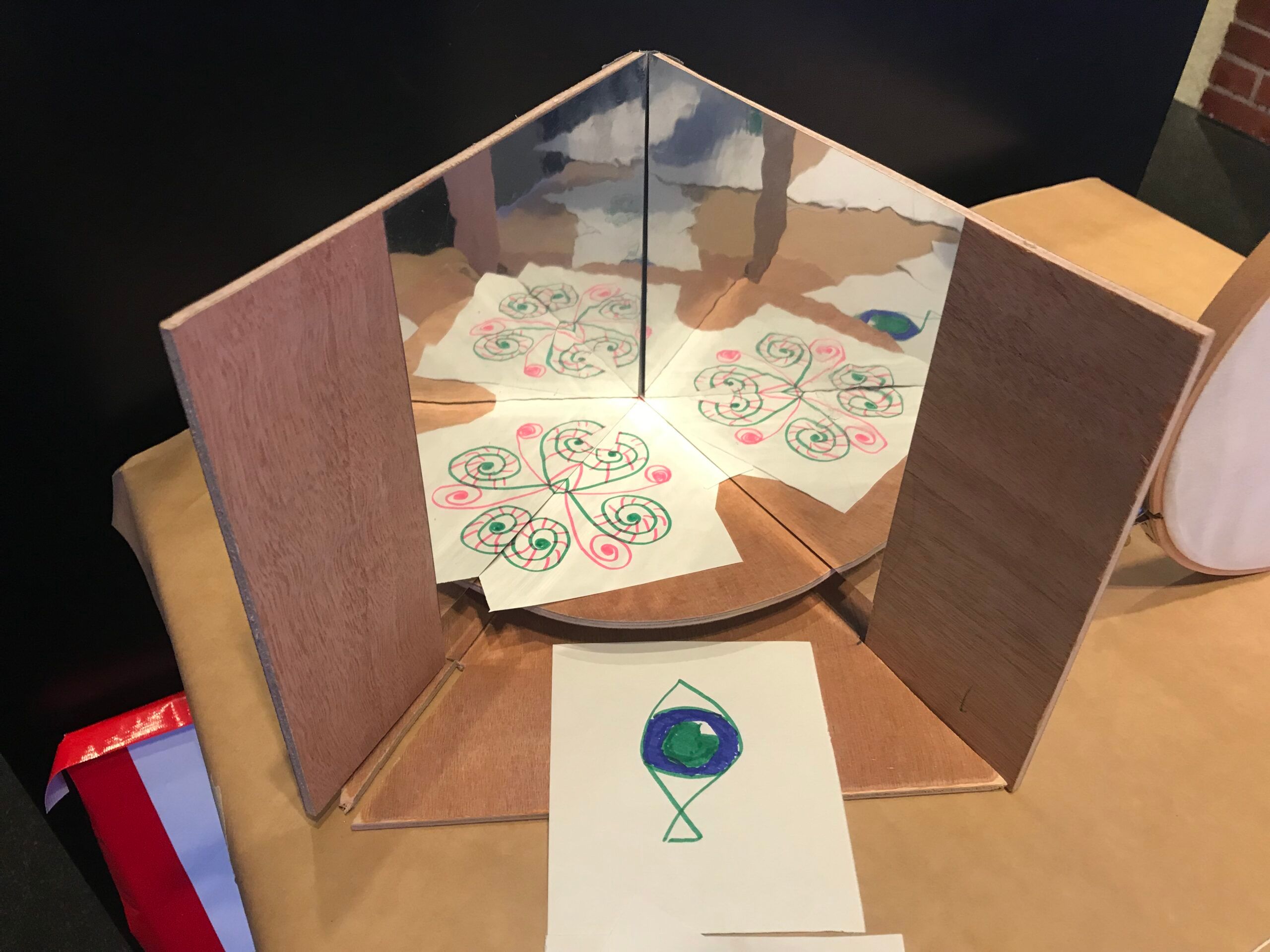
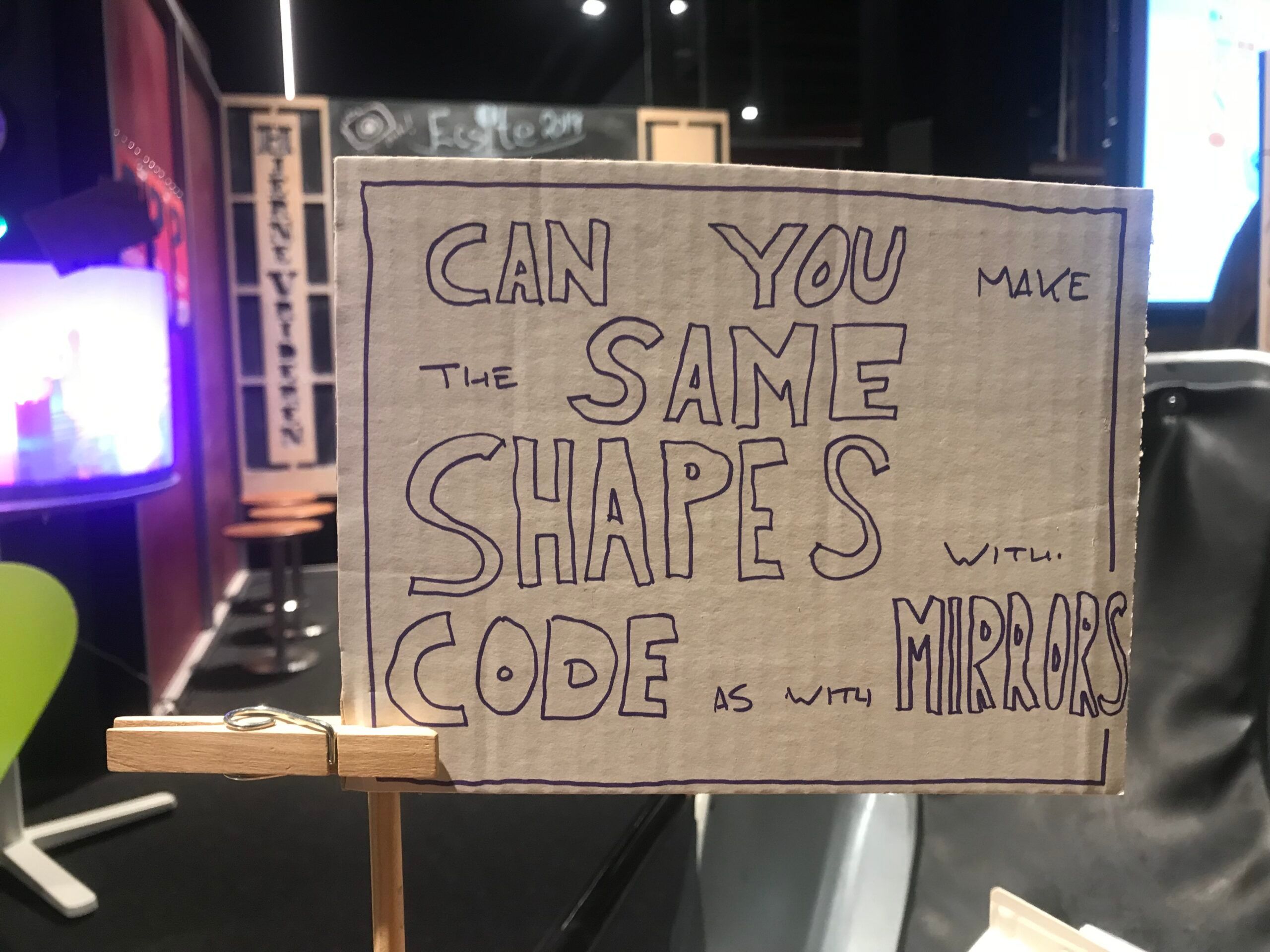
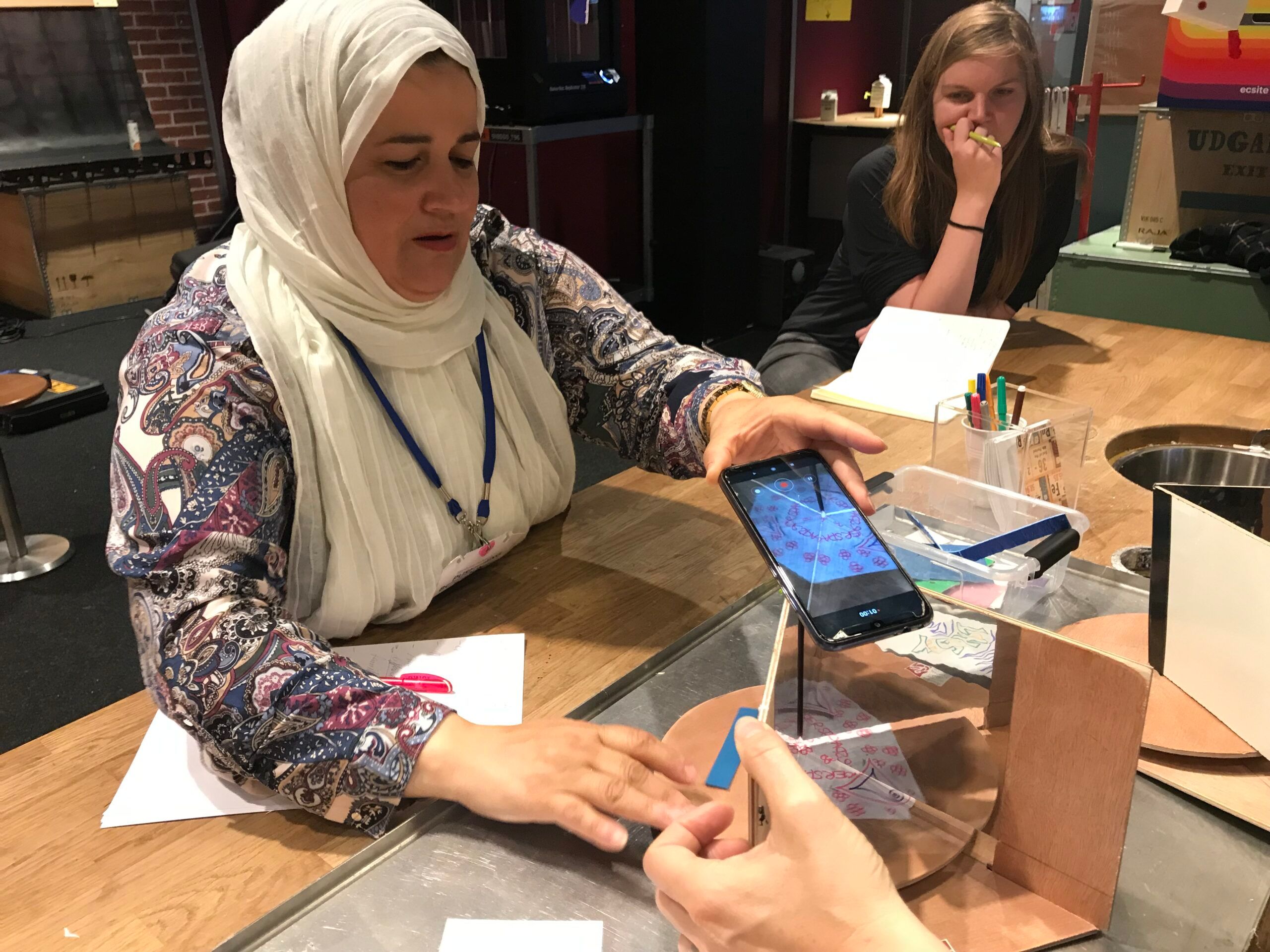
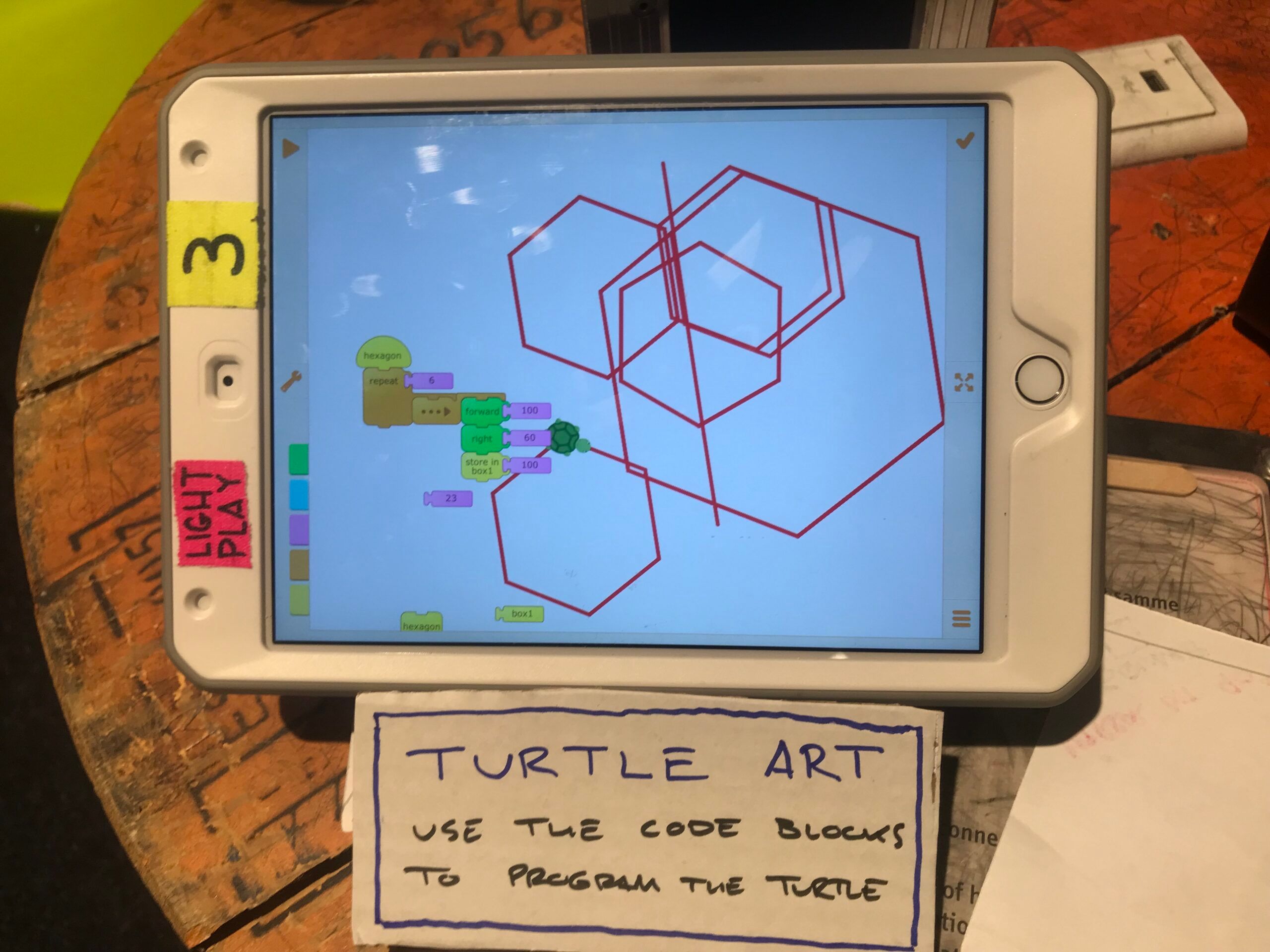
Figure out how to host and link to PDF here #
Georgine-the-mirror-and-the-turtle.pdf
User Experience Study #
A short piece of documentation interpreting the experience of a former colleague learning to use Turtle Art and exploring the possibilities afforded by the Open World Kaleidoscope. This was created as an exercise in the subjective learning documentation methods developed in Reggio Emilia, as documented in Reggio Children / Project Zero book Making Learning Visible: Children as Individual and Group Learners.
Notes #
1. Mitchell, R. Lifelong Kindergarten (2017) p. 82
2. Inspired by the Imaginary in Berlin and the Tinkering Studio in San Francisco
